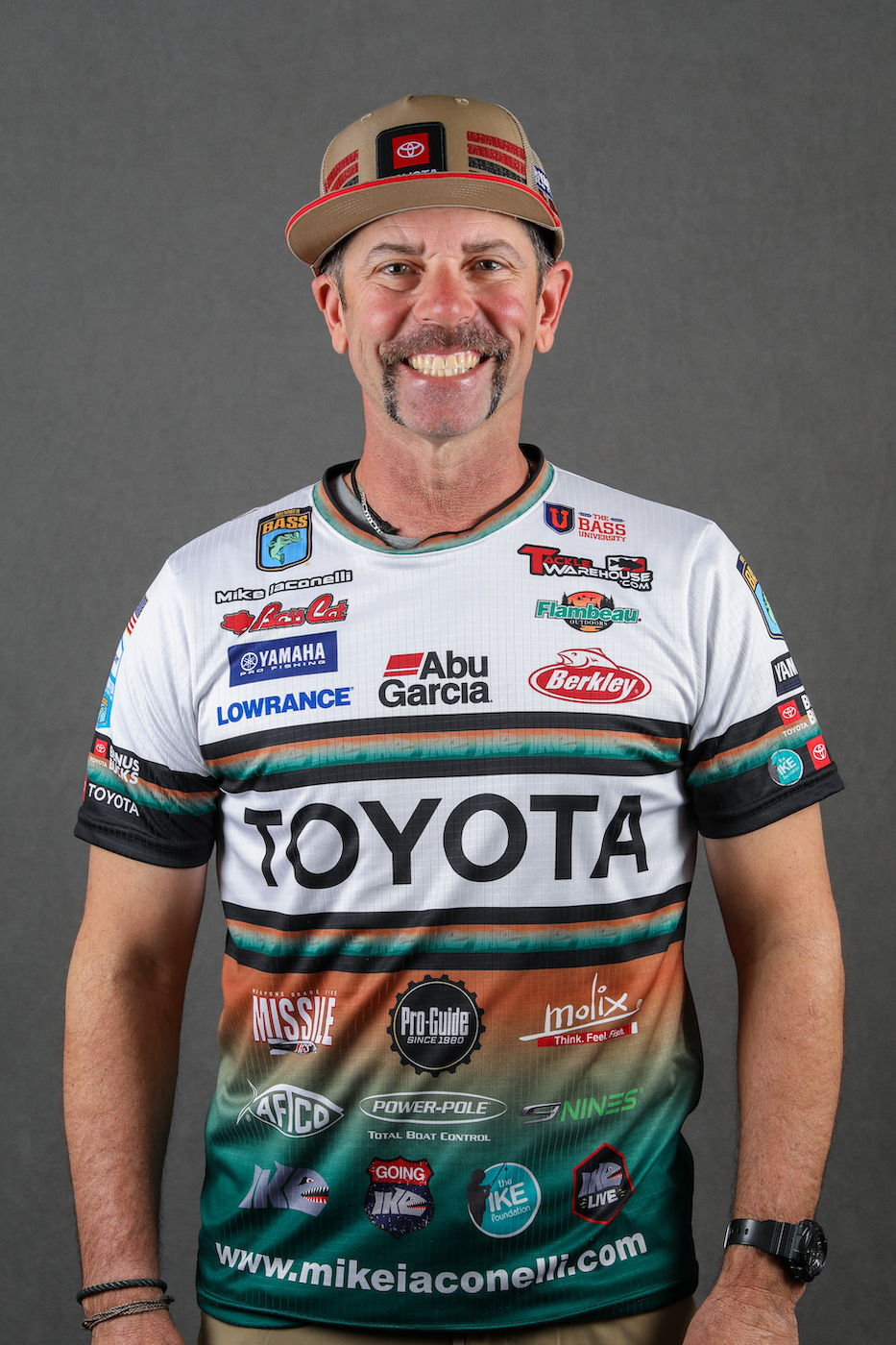Up to now, I’ve been concentrating on several of the best-known and most popular finesse techniques, but now I’d like to briefly describe two additional presentations I use a lot, especially now during the spawn and postspawn. One of them is a floating worm, and the other is a presentation I have named the Wet Noodle Rig.
I often use a floating worm when I’m fishing around flooded bushes and buck brush. Normally, we try to rig plastic worms so they hang perfectly straight, but with the floating worm, I purposefully push the hook further into the worm before pulling it back out so the worm has a bend or crook in it. The result is a very erratic, side-to-side wandering motion.
I prefer either a 5- or 6-inch straight-tail model in bright colors like pink, white or yellow, and if you’re wondering why this is the only time you hear pros using colors like this, the honest reason is because they’re easier for us to see. I rig with either a 3/0 or 4/0 offset hook and use an 8- to 15-pound fluorocarbon leader between 8 and 14 inches long. I tie this to a barrel swivel, and my main line is usually 6/14 or 8/20 Berkley FireLine. I use different sizes of swivels, which, in addition to preventing line twist, also serve as weight.
For decades, this was the preferred presentation at North Carolina’s famous Currituck Sound when this area was described as the “most famous 40 miles of bass fishing in America.” The worms were just slithered across the top of the milfoil. When I use this presentation, it’s either on the surface or just below the surface, and I mix in rod twitches as well as speed changes as I’m reeling.
The Wet Noodle presentation is a slight variation of drop shotting, and it differs from normal drop shotting in that the distance between the bottom weight and my hook is never more than about 8 inches, and I may make it as short as 2 inches. The lure I prefer is Berkley’s 5-inch Wacky Crawler, a tapered-end worm I rig wacky style. You’d be hard pressed to find another plastic worm on the market as limp and limber as the Wacky Crawler. If you hold it in the middle where you insert your hook, you’ll see why I call it a wet noodle.
Rigged wacky style, about half the bites I get come as the lure falls. It has tremendous shaking action since it is so limber. The other bites come when the lure is on the bottom, but here’s how I fish this rig differently from a drop shot: I don’t impart any action or rod shaking at all. I deadstick it, letting the lure sit completely still on the bottom. The design of the Wacky Crawler, the current and even my natural hand movement combine to keep the worm quivering, and that’s all bass need to see.
Because you can vary your retrieve on either of these presentations so many different ways, it’s important to let the bass themselves tell you how they want the lure presented. You hear this all the time from bass pros, but it’s really exactly how we fish. We try something different on every cast and retrieve, and when a bass finally does hit, we start trying to duplicate it on every following cast.
This means remembering not only where you catch a fish but also how you catch it. Believe me, making just a slight adjustment in how or where you cast your floating worm or Wet Noodle, and then changing your retrieve speed with either, may mean the difference between catching a lot of bass or just one or two.
Finesse Fishing with Mike Iaconelli, a new book by Mike Iaconelli and Bassmaster Senior Writer Steve Price, has just been published and autographed copies are available for $19.99 plus $4.95 S&H from www.mikeiaconelli.com.





